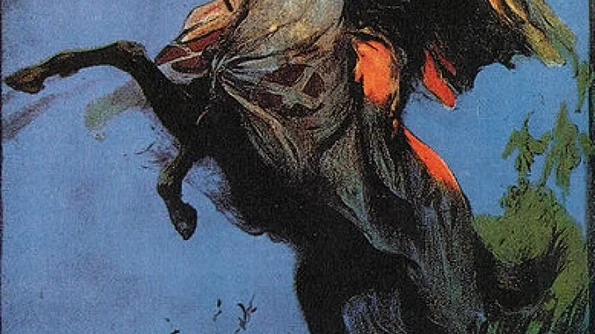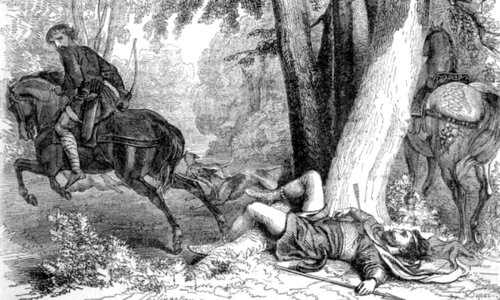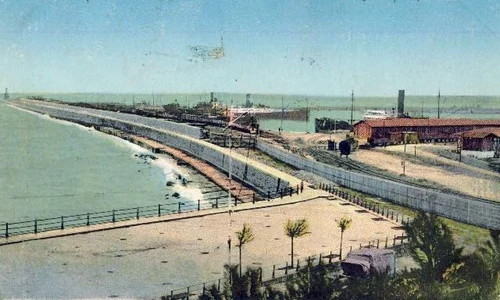
The Birth of a Nation: the controversy around historical films
D.W. Griffith is definitely one of the most important film directors in the history of American and world cinema. He was a true pioneer of this new, 20thcentury art, who brought numerous technical and artistic innovations in the world of movies, revolutionizing the cinema as we know it today. Although highly appreciated for his accomplishments, Griffith was also – and still is – criticized for one of his best known films. The Birth of a Nation, a 1915 film, is probably the most controversial film in American cinema because of its representation of the Afro-Americans community, the Civil War and the Ku Klux Klan.
The Birth of a Nation forces us, the spectators, to ask ourselves some very important questions. Can movies influence or change historical memory? How do we treat this kind of racist, controversial movies? Where do we draw the line between art and propaganda, between art and the liberty to present blameable ideas and images?
The Civil War through Southern perspective
An adaptation of a novel (The Clansman), launched in 1915, The Birth of a Nationenjoyed immense commercial success in a time when blockbusters didn’t exist. It ran in American theatres for years, it was forbidden in many of the northern states and highly appreciated in the South.
The movie tells the story of two families:the Stonemans, in the North (abolitionist Austin Stoneman, his two sons and his daughter Elsie) and Camerons, in the South, and their five children:Margaret and Flora, Wade, Duke and Ben. The two families happily interact at the beginning of the film and two love stories are born:Ben Cameron – Elsie Stoneman and Margaret Cameron – Phil Stoneman. However, these romances will be tragically interrupted by the outbreak of war.
The conflict is represented through a series of episodes:an attack on the Cameron house by a black militia;the death of Tod Stoneman and two of the Cameron brothers;Ben Cameron being injured in a heroic offensive and his arrival at a hospital, where he reencounters Elsie;the threat on Ben, who risks being executed, and his pardon by president Lincoln;and, eventually, the assassination of Lincoln, the tragic event that ends the film’s first part.
The second part of the film presents the post-war reconstruction and introduces to us some new characters, the most important of which is Silas Lynch, the mullato protégé of Austin Stoneman. Chronologically, we’re a couple of years after the war, whose disastrous effects are still visible, particularly in the south, where the liberation of slaves has created many problems. On the one hand, there are the abuses from the Negro community during the local elections and their attitude in legislative assembly, and on the other hand, we have Ben Cameron’s revelation, brought by these abuses, a revelation that leads to the birth of Ku Klux Klan.
‘Conquer we must, for our cause is just’
Watching the film, the element that first draws one’s attention is the strong accent the director places on the Southern lifestyle and the North-South differences. Griffith uses more screen time to present the South, the sweet life here and the Cameron family, than he uses for the Stonemans. You notice this best with the going-to-war scenes:the scene in which the Stoneman brothers are portrayed leaving for the war is very short, while for the Camerons, we have a much longer scene, portraying the family drama of watching their sons in army and, later on, killed. Then there’s the big Southern ball the night before the soldiers leave and the manner in which they’re acclaimed on the streets, thus suggesting the just cause for which the South fights and the idealised image of the war (notice also the message ‘Conquer we must, for our cause is just’). Later, during the fighting scenes, the director underlines the heroic character of the Southern soldiers, while the Union Army soldiers are presented in a negative light.
Griffith also uses text inserts to suggest certain things. The most direct are, of course, the W. Wilson quotes:‘The white men were roused by a mere instinct of self-preservation... until at last there had sprung into existence a great Ku Klux Klan, a veritable empire of the South, to protect the Southern Country.’

With other quotes, the director speaks of nostalgia of the South:‘in the Southland... where life runs in a quaintly way that is no more’;of the damages the war caused in the South:‘Piedmont scarred by the war’, ‘the agony which the South has endured so that a nation might be born’;of Flora’s innocence and honour, wrecked by the black captain:‘for her who had learned the stern lesson of honour’.
Themes and motives in The Birth of a Nation:the perseverance of Southern honour;tragedy of the war;idyllic southern landscape
It’s very interesting how Griffith portrays Abraham Lincoln. He’s idealized as a friend of the South, as its protector against Northern radicals (like Stoneman), and the fact that his assassination ends the first part of the film is by no means a coincidence. It’s Griffith’s way of suggesting that the president’s disappearance left way to the excesses and abuses that affected the South.
Silas Lynch is the opposite image of Lincoln, as the negative character in this film, bringing together all the negative, demonic characteristics of the black population. However, it’s interesting to see that Lynch is actually a mulatto, thus suggesting he’s the result of the unnatural union between the two races, an idea highly popular in the South.
How are the Afro-American portrayed? Firstly, we notice that the ‘good’ Negroes are the ones who, during the Reconstruction, stay with their former masters and protect them. As for the rest of the black community, the director suggests it’s not ready for political equality, which it doesn’t deserve because it’s bound to abuse it (the elections scene) and because it lacks any political culture and civilised manners whatsoever.
The legacy of Griffith is simultaneously that of the medium’s colossal artistic force and its power for demagogy—of the potential to bring a world to life onscreen and the potential to turn that world into the big lie, whether with sincere or cynical intentions.R. Brody
Our relationship with historical films and historical memory
The Birth of a Nation, like any other historical film, confronts us with certain questions regarding the functions of this kind of films. Is the artistic film capable of influencing or modifying historical memory? Can it change the way that a society represents a certain event in the past? We’re leaning towards yes. More than often, the image we hold of a historical character of event can easily transform:from the image we see in written historical narratives (like school books) we end up with a distorted image that has borrowed elements from other sources. In the past, this alternative source was literature:for example, specialist Marc Ferro uses the perfect example of Cardinal Richelieu, known to a wider audience thanks to Dumas’ The three musketeers. Today, this source is film. And this how, in time, we start to confuse the two images, so that we can no longer distinguish between them:when thinking of a historic event, we can no longer tell which information we’ve gathered from the classic historical narrative and which information we got through films.
This is how historical memory is modified in the long term. Depending on the case, this change can be positive, creating heroes or national mythologies, or it can a negative one, like in The Birth of a Nation. However, we must hold this into account:that films can have these effects, positive or not, where historical memory – or, to be more precise, a group’s collective image of history –is based more on historical mythology than a classic historical narrative.
Historical film can also create or emphasize biases and stereotypes. Griffith, for example, uses many of the classic stereotypes regarding the Afro-American population (violent character, lack of political culture, a certain negative eroticism). A film’s ability to do create/emphasize stereotypes is greater if the audience is less educated. For example, a person unfamiliarised with the history of the Civil War and the Southern society, who has never interacted with Afro-Americans, could easily absorb the film’s message and stereotypes without questioning them. As Richard Brody wrote, in a The New Yorker article,
The real crime was not Griffith’s, but the world’s:the fact that most viewers knew little about slavery and little about Reconstruction and little about Jim Crow and little about the Klan, and were all too ready to swallow the very worst of the movie without question. [...] Ambient and accepted racism left viewers ignorant of the facts and prone to accept Griffith’s racist version as authentic.
To conclude with, Griffith’s movie, with its strong controversial message, demonstrated that historical films can play an important role in society and influence it immensely. This is why in the Northern states, the film was perceived as an insult, a deeply racist movie, while in the South, it was much acclaimed, because the population understood its message.















